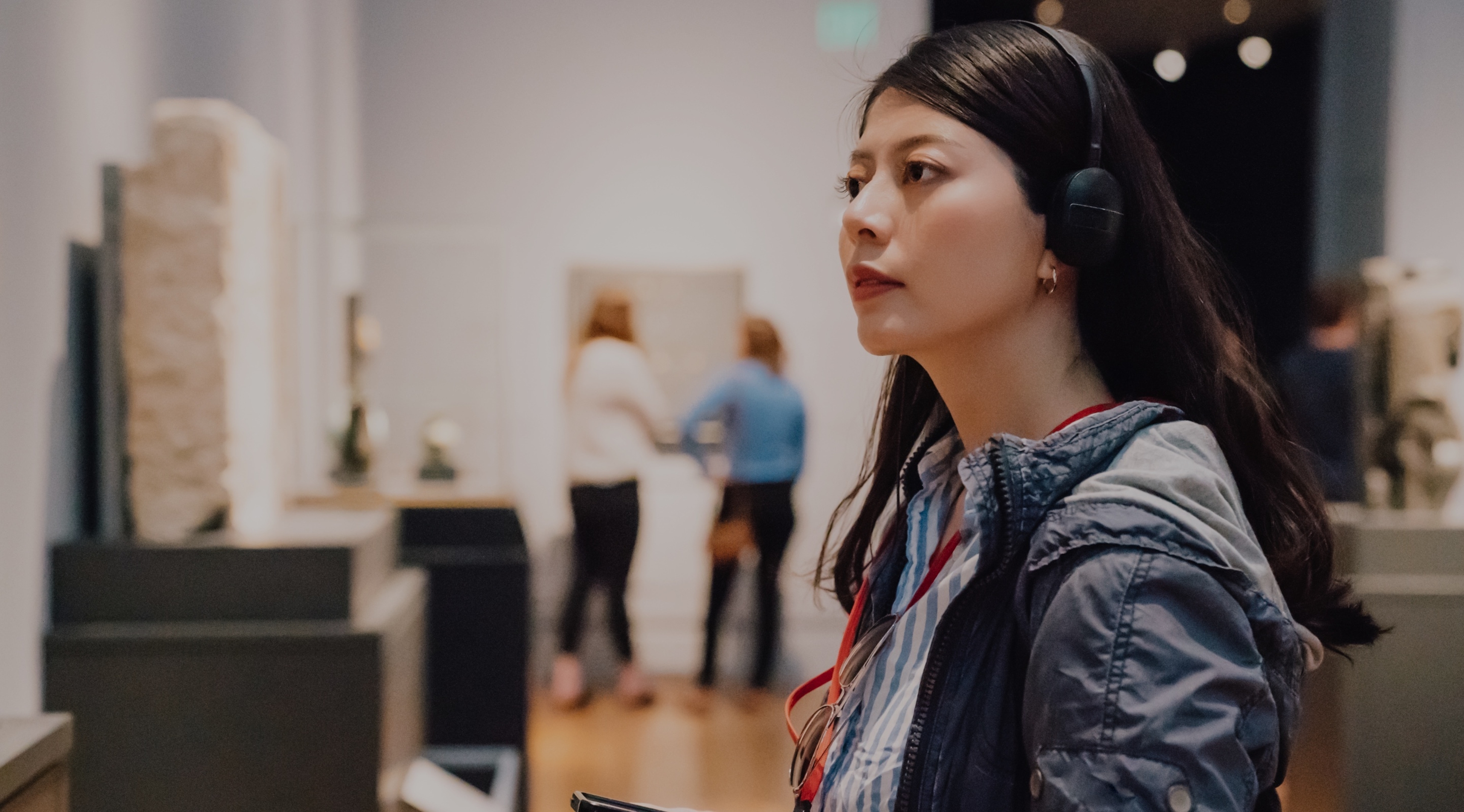Art as powerful communication
Chris Hampton is a Hamilton-based freelance arts and culture writer.
The reason I love art is simple: it can express just about anything a person can think or feel. It showcases the richness of our experiences. The breadth of ideas, perspectives, and stories that art can communicate is virtually infinite, and I’ve learned a great deal about the world just by hanging around it — both as a journalist and as a fan.
The way I see it: an artwork is a bit like an essay, but in a friendlier package. It’s a conversation started inside a frame. And it’s a form of articulation that can even transcend language. Art can do history, geography, memoir, math, science, philosophy — you name it. In just these first episodes of TVO Arts, you’ll encounter a series of performances that challenge the stereotypes of Canadian national identity, a picture that questions the relationship of photography to reality, as well as an installation that offers spectators an ultra-vivid, highly-specific experience of place by transporting them to the average Quebec City corner store. The possibilities seem to be unlimited. So what is it that makes art such a unique and powerful form of communication? And why ought we listen to what it has to say?
Art tends to be good at bringing the “enchanting” and “even magical powers of communication” to the fore, says Henry Adam Svec, an assistant professor in the faculty of communication arts at the University of Waterloo. “Art can rebuild reality for the viewer, including individual ways of seeing or listening or feeling or relating to others. And this is what we often ask it to do.”
Svec refers to the work of American communications theorist James Carey, who proposed two models of communication. The first, which is known as transmission, is perhaps the more familiar idea, Svec says. Communication, in this sense, refers to the cargo-like movement of signals or information from Point A to Point B. According to Carey, however, there’s also another way of thinking about what communication is — and that’s ritual. “It derives from the Latin word communis, which means common or shared,” Svec explains. “Here, communication is less about sending something than it is about building something together, like sharing a universe of meaning.” While the notions overlap and artworks certainly transport ideas, this second connotation, Svec says, may be more useful in understanding the communicative function of art. It nurtures a multiplicity of viewpoints. And this environment of diverse ideas is a critical condition to our liberal democracy. Art provides us a means to express ourselves freely.
Henry Adam Svec - assistant professor, University of Waterloo
Art is an unusual form of communication, according to Svec, because unlike, say, advertising or journalism — communication with “clear rhetorical goals” — “we often value artworks that have a relatively high amount of ambiguity and even noisiness built into them.” It is perhaps this quality people describe when they say they don’t “get” art; it requires interpretation. Svec, however, sees it as art’s special power. “Since at least the modern period, the artists we celebrate often generate a variety of possible interpretations, and really, the more interpretations possible, the richer and more complex we tend to speak of the work being.” It’s a rare exercise in communication that asks participants to explore how its puzzle pieces, whether aesthetic or conceptual, might fit together. For the viewer, the experience encourages the development of new ideas as well as new relationships between ideas.
For artists, many say that art enables them to express a thought or feeling that would otherwise be difficult to communicate. “Art is able to capture and communicate nuances, paradoxes, unresolved or unresolvable tensions, and ambiguities that exceed ordinary communication,” says Adam Lauder, a Toronto-based art historian. The artist Camille Turner, whose photographic performance Hometown Queen is explored in Episode 4, sees her role as a sort of “conduit.” She describes her artwork as “communication from hidden worlds,” which she passes on to her audience. Art-making helps the artist draw new connections about the world around her and to inspect and inhabit them better than she might by words alone. “The work is what allowed me to be able to see what’s going on, to feel it, to listen to it,” Turner says, recalling a recent video project titled Nave, which she describes as a meditation on the transatlantic slave trade and the role of ships built in Newfoundland. In this regard, art helps Turner to both perceive more deeply as well as to share these perceptions with others so they might feel them deeply, too.
This is the awesome power of art as communication that Svec describes: it not only has the ability to share experience, but also to build a shared experience together. “We have a lot to learn from one another,” he says. “And we can do that by listening, and by reading, and art, too, is a way that we can have our worlds enriched and exploded, rearranged and reorganized by our fellow human beings.”
